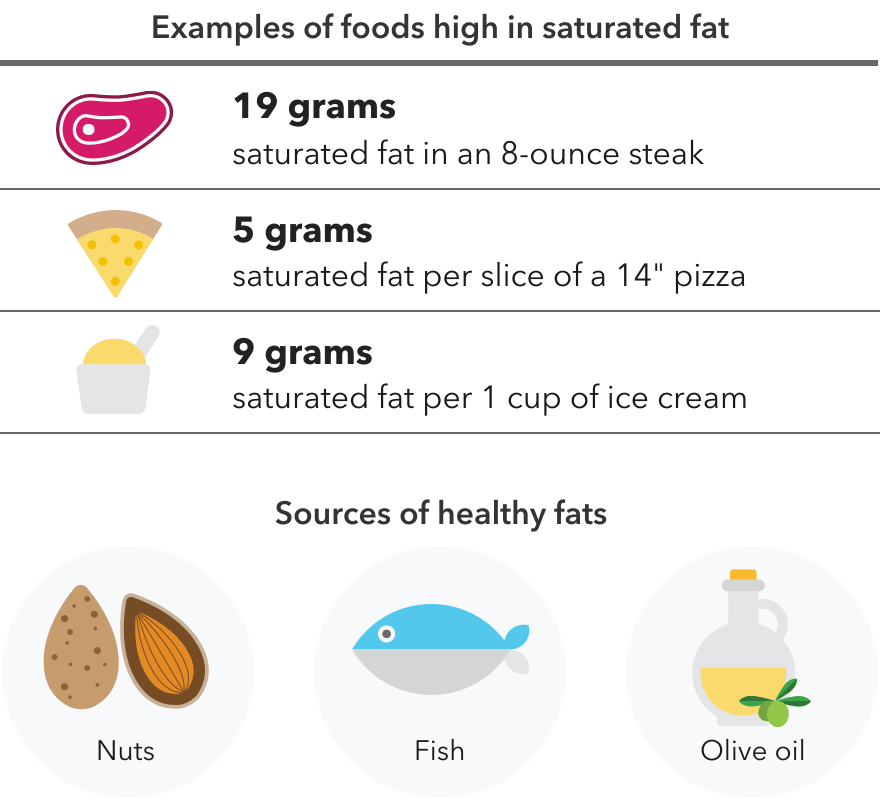Let's talk aboutSaturated Fat and Weight
How can dietary fat impact our health?
Fats are an important part of a healthy diet: they give you energy, help build your cells, and help you absorb certain vitamins. There are three main types of fats, but not all types are equally healthy.
- Saturated fats are found primarily in red meat and full-fat dairy products and have been linked to increased LDL (“bad”) cholesterol and total cholesterol, which are risk factors for heart disease.
- Trans fats are found in processed foods like cookies and frozen pizza and can increase your risk of heart disease. Experts agree that we should avoid trans fats.
- Unsaturated fats are found in nuts, fish, and most vegetable oils. These fats may help improve your cholesterol levels and are commonly thought of as healthy fats.

A genetic link
Genetic factors can help explain why some people weigh more than others when their diets are high in saturated fat.
People with two copies of a specific variant near the APOA2 gene (the GG genotype) tend to weigh more than others on a high saturated fat diet. For those people, limiting saturated fat intake may be especially important for maintaining a healthy weight. But other factors – like exercise, other dietary choices, and other genetic variants – also have a big impact on a person’s weight. And regardless of your genetic result, it’s important to limit your saturated fat intake to help reduce your risk of developing heart disease.
Check out our Genetic Weight topic page to learn more about how genetics can impact not only how much we weigh but also how much diet and exercise may make a difference.
Did you know?
About 70% of Americans eat more than the recommended daily amount of saturated fat. Experts recommend consuming less than 10% of your daily calories from saturated fat, which is 22 grams for a 2,000-calorie-per-day diet.
Tipping the scales: A glimpse into 23andMe research
According to 23andMe research, many 23andMe research participants reported making healthy dietary changes after receiving their 23andMe Saturated Fat and Weight Wellness report, including eating less saturated fat and more unsaturated fat. This preliminary study also found that the people with the APOA2 GG genotype – who tend to weigh more on a diet high in saturated fat – were more likely to reduce their saturated fat intake than people with other genotypes.
Learn more about saturated fat and weight
Find out how your genetics may impact your body’s response to saturated fat with the Saturated Fat and Weight Wellness report, available in 23andMe’s Health + Ancestry Service. The report includes one variant near the APOA2 gene that has been associated with weighing more on a high saturated fat diet.

Health + Ancestry Service
References
U.S. Department of Agriculture, Agricultural Research Service. “USDA Food Composition Database.